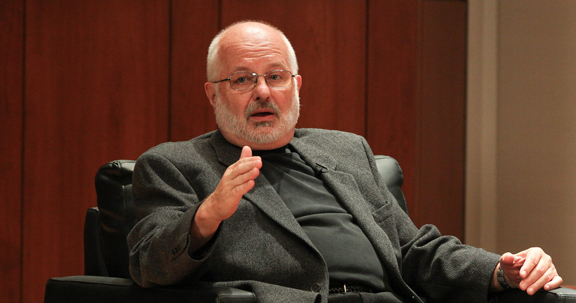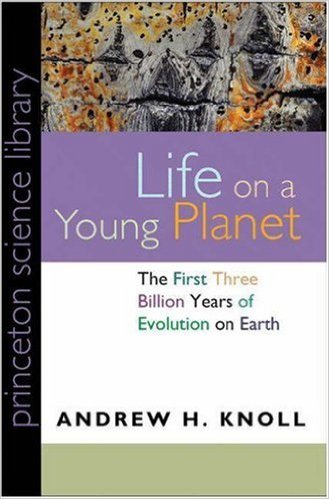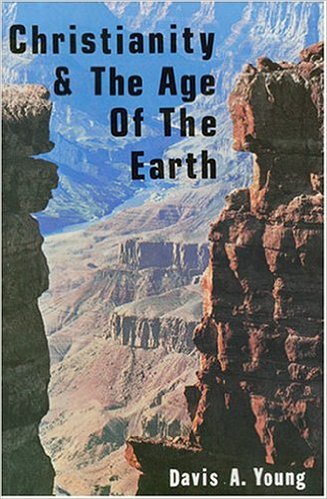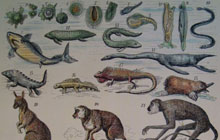Though some Christians defend evolution as a viable and biblical concept, there are two other dominant camps within Christianity that simultaneously disagree on the age of the earth and affirm the incompatibility of evolution and Scripture. The remainder of this course focuses on these two positions. We will first examine the Christian understanding of the earth as a young planet—roughly 6,000-10,000 years old. Christians who hold this view argue their position two different ways—from Scripture and from science.
Let us begin by reading one author’s explanation of how the Bible itself teaches a young earth (Source).
——
To the sincere and honest student, what the Bible says about the age of the Earth deserves serious consideration. For those who believe that there is a God, that Jesus is His Son, and that the Bible is His Word, this section offers an accurate answer to the question about the Earth’s age.
It certainly would have solved many problems if God had put a verse in the Bible that said something to the effect of: “When Jesus was born, the Earth was exactly 4,134 years old.” Obviously, no such statement can be found in The Book, but that does not mean that the answer is not there. Many times, in order to find out what the Bible says about a particular subject, we must look at several different verses and piece them together like a puzzle. So, let’s take one piece at a time.
In one sense, the Bible tells us exactly how old the Earth is. In Mark 10:6, Jesus stated: “From the beginning of the creation, God made them male and female.” How long has humankind been on this Earth? Jesus said “from the beginning of the creation.” Genesis 1:26-31 explains that God chose the sixth day of the Creation week to form mankind from the dust of the ground. Were humans a part of that six-day beginning? Indeed they were. But what does it matter if mankind was formed on day six? Exodus 20:11 records: “For in six days Jehovah made heaven and earth, the sea, and all that in them is, and rested the seventh day….” Quite simply, that piece of information, combined with the information from Genesis 1 and Mark 10:6, informs us the Earth is exactly five days older than humanity!
In order to determine the age of the Earth, then, we must determine how long man has been here—which is not as difficult as it may seem. Speaking in round figures, it has been about 2,000 years since Jesus Christ visited the Earth. Secular history volunteers that piece of information, since it is A.D. 2002 (A.D. standing for anno Domini, meaning “in the year of the Lord”). Next, we must determine how many years came between Jesus Christ and Abraham. Secular history also volunteers this figure, which turns out to be about 2,000. These two figures can be obtained from practically any secular history book.
The final number we must uncover is the number of years between Abraham and Adam. We know from Genesis 1:1-5 that the Earth was created on day one. We know from Paul’s statement in 1 Corinthians 15:45 that Adam was “the first man.” And we know from Genesis 1 that Adam was created on day six of the Creation week. If we could determine the number of years between Adam and Abraham, that would place us within five days of “the beginning.” All that would be necessary to calculate an approximate age for the Earth would be to add the three figures together—the time from Adam to Abraham, the time from Abraham to Jesus, and the time from Jesus to us. The figure representing the time between Abraham and Adam cannot be retrieved from secular history, of course (nor should we expect it to be), since the Noahic Flood would have destroyed most, if not all, of the records pertaining to that time period. How, then, can we determine the number of years in that time span?
In chapter 3 of the book that bears his name, Luke lists 55 generations between Jesus and Abraham—a time that archaeology has determined to be about 2,000 years (see Kitchen and Douglas, 1982). In that same chapter, Luke documents that there were only 20 generations between Abraham and Adam. How much time is covered by those twenty generations? Since Genesis 5 provides the ages of the fathers at the time of the births of the sons in the period between Abraham and Adam, it is a simple matter to calculate the approximate number of years during that time span—a figure that turns out to be about 2,000. In chart form it looks like this:
| Present to Jesus | 2,000 years |
| Jesus to Abraham | 2,000 years (55 generations) |
| Abraham to Adam | 2,000 years (20 generations) |
[The fact that the 55 generations between Jesus and Abraham cover 2,000 years, while only 20 generations between Abraham and Adam cover the same amount of time, is explained quite easily on the basis of the vast ages of the patriarchs (e.g., Methuselah, who lived 969 years—Genesis 5:27).]
Some have argued that the genealogies in Genesis 5 cannot be used to show the age of the Earth because they contain huge gaps. But in Jude verse 14, the writer noted that “Enoch was the seventh from Adam” (he is listed, in fact, exactly seventh in the genealogies in Genesis 5:21). Therefore, we know that there are no gaps between the first seven patriarchs, because Jude, writing by inspiration of the Holy Spirit, confirmed the Old Testament account. That leaves only 13 generations with possible gaps between them. In order to accommodate the evolutionary scenario that man has been on the Earth (in some form) approximately 3.5 million years, one would need to insert approximately 290,000 years between each of the 13 generations. It does not take a wealth of Bible knowledge or common sense to see that this quickly becomes ludicrous. Who could believe that the first seven of these generations are so exact, while the remaining 13 contain “gaps” of over 290,000 years each? What kind of biblical exegesis would that represent?
The Bible plainly teaches, after all the pieces have been put together, that the Earth is only about 6,000 or so years old. It is a young Earth after all!
——-
Another of the most common sub-discussions revolves around the length of the “days” mentioned in the Genesis account. Were they literal 24-hour periods? Were they “ages” or “epochs”? Watch the following video from the Creation Evidence Museum, in which Carl Baugh offers the argument, based on Hebrew grammar, that the creation days had to have been literal days (Source).
——
Finally, we will briefly examine the young-earth argument that death is a result of the Fall, and therefore could not have occurred prior to that. Consider this conclusion from an article published by Answers in Genesis (Source).
—–
The Bible clearly teaches the young-earth creationist view of Genesis 1–11. The belief in a literal 6-day creation about 4000 years before Christ and a global Flood and no death or natural evil before the Fall was the almost universal belief of the church for 1800 years. Progressive creationism and theistic evolutionism in all their various forms (day-age view, gap theory, framework hypothesis, analogical days view, local flood view, etc.) are recent and novel interpretations that will not stand up to scrutiny with an open Bible.
Prominent historian of science and former creationist Seventh Day Adventist turned agnostic, Ronald Numbers, recognizes the problem that so many Christians overlook or deny. He put it this way:
For creationists, history is based on the Bible and the belief that God created the world 6,000–10,000 ago. . . . We humans were perfect because we were created in the image of God. And then there was the fall. Death appears and the whole account [in the Bible] becomes one of deterioration and degeneration. So we then have Jesus in the New Testament, who promises redemption. Evolution completely flips that. With evolution, you don’t start out with anything perfect, you start with primitive little wiggly things, which evolve into apes and, finally, humans. There’s no perfect state from which to fall. This makes the whole plan of salvation silly because there never was a fall. What you have then is a theory of progress from single-celled animals to humans and a very, very different take on history, and not just human history.
So, what is at stake in this issue of death and other natural evils before the Fall? Nothing less than the character of God, the authority, reliability and perspicuity of His Word, and the truth of the Gospel. While the age of the earth is not a salvation issue, it is a gospel issue. It is not necessary to believe in a young earth and global Flood to be saved. We only need to believe in Jesus as Savior and Lord to be saved. But the acceptance of millions of years of natural evil in the non-human creation undermines the reliability and authority of the Bible that gives us the gospel and destroys the whole reason for the gospel and Christ’s final redemptive work.
It is only because the scientific majority claims that millions of years is scientific fact, that old-earth creationists and theistic evolutionists reject what the Bible plainly teachings about the origin of natural and moral evil and the age of the creation.











